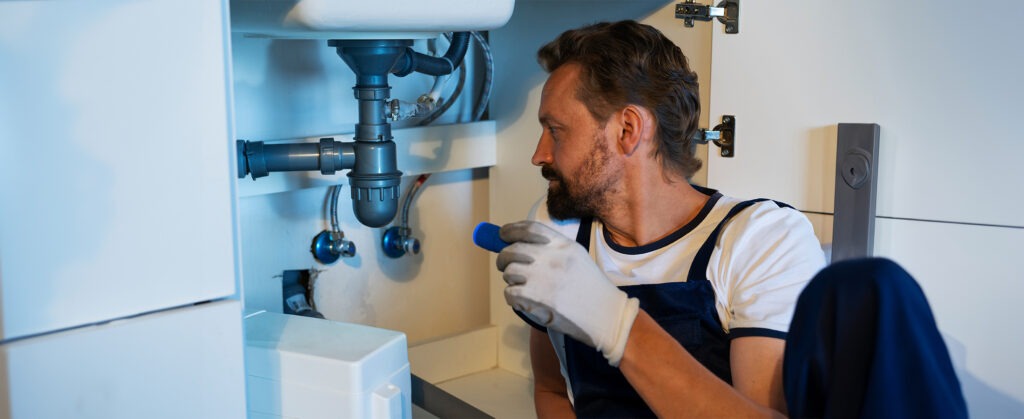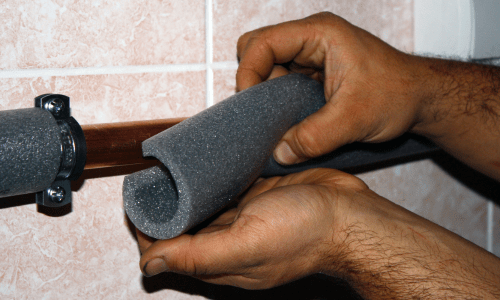As winter approaches, most of us focus on staying warm, decorating for the holidays, and sipping hot cocoa by the fire. However, one crucial task often gets overlooked: plumbing winterization. Frozen pipes, burst fixtures, and water heater failures can turn the coziness of the season into a costly nightmare. Fortunately, with proactive measures and expert cold weather plumbing tips, you can protect your plumbing system from freezing temperatures and avoid expensive repairs. You can also explore our well-curated blog on the benefits of installing energy-efficient plumbing fixtures. Here’s a step-by-step guide on how to winterize your plumbing effectively and keep your home running smoothly.
11 Cold Weather Plumbing Tips:

1. Insulate Your Pipes
When temperatures drop below freezing, your pipes are at significant risk. Water expands as it freezes, potentially causing pipes to burst and leading to expensive repairs.
Why Insulation Matters
Insulating your pipes creates a barrier that keeps them warm enough to prevent freezing, even in extreme cold. Foam pipe insulation or heat tape is affordable, easy to install, and highly effective.
How to Insulate Pipes
- Identify exposed or vulnerable pipes in unheated areas such as basements, crawl spaces, attics, and garages.
- Wrap foam pipe insulation around these pipes and secure it with tape.
- For areas prone to deep freezes, use heat tape or heat cables for added protection.
Pro Tip: Cover any pipes running through your basement or garage, as these spaces are particularly susceptible to freezing.
2. Remove and Drain Hoses
If you leave hoses attached to outdoor faucets, water inside them can freeze and expand, leading to damage not just to the hose but also to your faucet and plumbing system.
What to Do
- Disconnect and drain all hoses before storing them indoors for the winter.
- Drain outdoor faucets thoroughly to remove any trapped water.
- Shut off water flow to exterior faucets using the indoor shutoff valve for added safety.
Pro Tip: Install frost-free spigots for long-term prevention against freezing.
3. Open Cabinets
Pipes under kitchen and bathroom sinks are vulnerable to freezing if temperatures drop below freezing. Allow warm air from your home to reach these areas.
How to Open Cabinets Properly
- Open all cabinets in kitchens and bathrooms to let ambient air circulate around the pipes.
- If temperatures are extremely low, place a fan or portable heater near the open cabinets to provide additional warmth.
4. Let Faucets Drip
One of the simplest cold weather plumbing tips is to let your indoor faucets drip slowly during freezing weather.
Why This Works
Allowing faucets to drip keeps water moving through your pipes, preventing pressure from building up if a freeze occurs. This is especially important for pipes exposed to outdoor temperatures.
5. Maintain a Consistent Temperature
Avoid extreme thermostat settings during the winter to protect your pipes.
Tips for Temperature Management
- Keep your thermostat set to at least 45°F to prevent your pipes from freezing while still saving energy.
- During extreme cold spells, maintain a constant indoor temperature to reduce the risk of frozen pipes.
6. Check and Maintain Your Water Heater
Your water heater works harder in winter, making maintenance essential to avoid breakdowns during freezing mornings.
How to Maintain Your Water Heater
- Flush the tank to remove sediment and improve efficiency.
- Test the thermostat and set it to 120°F for optimal performance.
- Inspect for signs of rust, leaks, or damage.
Pro Tip: Consider upgrading to a tankless water heater for improved energy efficiency.
7. Prevent Clogs
Winter is no time to deal with clogged drains. Prevent blockages by being mindful of what goes down your drains.
What to Avoid
- Avoid putting fibrous or stringy food scraps (e.g., carrot peels, banana skins) down your garbage disposal.
- Dispose of leftover grease in the trash instead of the sink to prevent it from congealing and blocking pipes.
8. Seal Gaps and Cracks
Drafts can sneak in through gaps around windows, doors, and plumbing entry points, exposing nearby pipes to freezing temperatures.
How to Seal Gaps
- Inspect areas around plumbing entry points and seal visible gaps with caulking or expanding foam.
- Use weatherstripping on windows and doors to block drafts.
- Insulate your garage, as pipes in this space are especially vulnerable.
9. Maintain Your Sump Pump
A malfunctioning sump pump during winter can lead to flooding and costly repairs.
Sump Pump Maintenance Tips
- Clean the sump pump and the pit it’s located in to ensure proper functionality.
- Test the pump to confirm it will operate in freezing temperatures.
10. Fix Leaks Before Winter Hits
Small leaks can turn into major problems when temperatures drop.
Why Fixing Leaks is Important
Water inside a leak can freeze, expand, and worsen the damage. Repairing leaks now prevents costly repairs later.
11. Bonus Tip: Know How to Drain Pipes for the Winter
If you’re leaving your home for an extended period or are a first time home owner, draining your pipes is a crucial step in plumbing winterization.
How to Drain Pipes
- Shut off your home’s main water supply.
- Open all faucets to let water flow out of the pipes.
- Flush toilets to empty the tanks.
12. Cover Exposed Pipes with Heat Cable
If you live in an area prone to extreme temperatures, consider wrapping exposed pipes with both insulation and heat cable.
Why Heat Cable is Effective
Heat cable activates automatically when temperatures drop, keeping your pipes warm and preventing freezing.
Conclusion
Winter doesn’t have to spell disaster for your plumbing or cost you an arm and a leg. You can read more about saving cost money with regular plumbing maintenance here. By following these winter plumbing tips—insulating pipes, removing hoses, draining outdoor faucets, and maintaining your water heater—you can protect your home from the harsh effects of freezing temperatures. Be proactive with your plumbing in winter preparation, and save yourself from costly repairs and stress. Stay warm, stay prepared, and enjoy a hassle-free winter!


